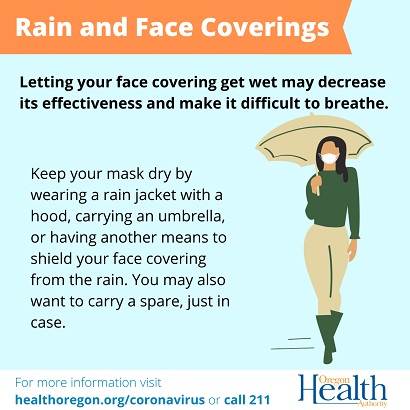More testing with less-than-accurate tests
As the Oregon Health Authority sends out notice of keeping face coverings dry during rainy weather, the
Center for Disease Control and Prevention website says people testing positive for COVID-19 may simply have the common cold. If you test positive, the test result may show you have antibodies from an infection from a virus that causes COVID-19. However, there is a chance you have antibodies from a virus from the same family of viruses called coronaviruses such as the one that causes the common cold.
“Some tests may exhibit cross-reactivity with other coronaviruses, such as those that cause the common cold. This could result in false-positive test results. Some persons may not develop detectable antibodies after coronavirus infection... Thus, serologic test results do not indicate with certainty the presence or absence of current or previous infection with SARS-CoV-2.â€
“Serologic testing by itself should not be used to establish the presence or absence of SARS-CoV-2 infection or reinfection. Antibodies may not be present among those tested early in illness before antibodies develop or among those who never develop detectable antibodies following infection. In addition, the presence of antibodies may reflect previous infection and may be unrelated to the current illness.â€
There are growing suggestions that we should wear masks to prevent spreading the flu and colds also. With the constant wearing of a face mask at work and schools, the question is how long can a person wear a mask without fear of hypoxia. According to a study in 2008 that studied the risk of hypoxia, the onset of slight hypoxia starts after the first hour of wearing a mask. It can trap the exhaled CO2 that limits the oxygen intake in the air we breathe and induce silent hypoxia. The inexpensive masks or cloth masks are for show. A respirator mask (N95 mask) filters out 95% of small flu particulate matter, and COVID-19 are smaller. Are we headed towards another medical crisis from wearing the wrong mask too long?
--Donna Bleiler| Post Date: 2020-10-16 07:34:29 | Last Update: 2020-10-16 08:22:20 |






